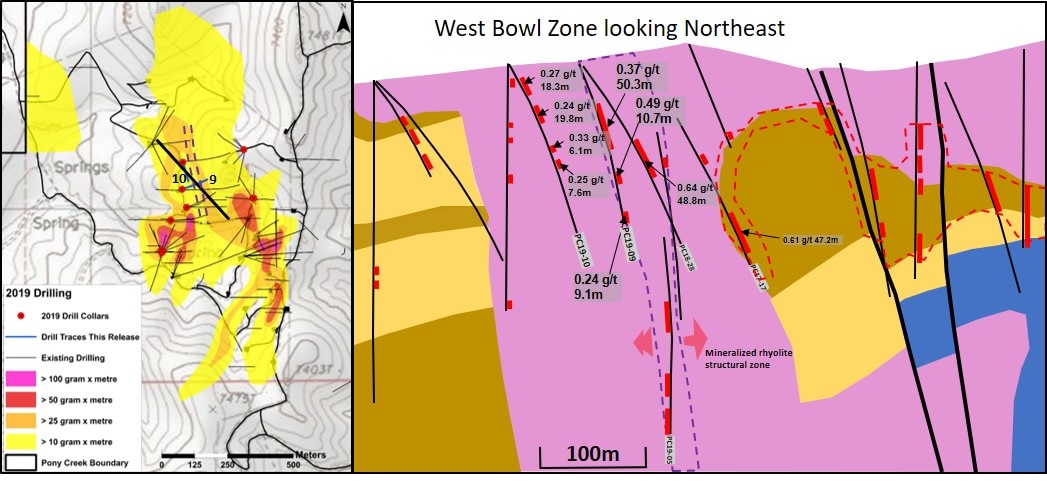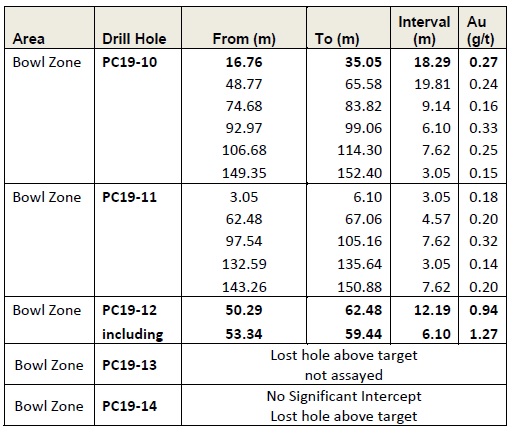
Contact Gold (C.V) has released another batch of 5 holes that have been drilled on the Bowl zone of the Pony Creek gold project in Nevada.
Hole 10 was an infill hole that was aimed at confirming the gold mineralization in between holes that were approximately 100 meters away from each other. It’s fair to say this hole was successful in confirming the existence of gold as it encountered several thick intervals of gold-bearing rock. Granted, the grades are a bit low to be a real money-maker (18.3 meters at 0.27 g/t, 19.8 meters at 0.24 g/t, 9.1 meters at 0.16 g/t gold and 6.1 meters at 0.33 g/t gold) but A) these grades should be above the cutoff grades that will be used in a resource model and B) all four intervals were encountered within 100 meters from surface. So while the grades aren’t shocking, having 53 meters of gold mineralization above the expected cut-off grade isn’t too bad.
Hole 11 encountered similar grades, but over much narrower intervals (3 meters at 0.18 g/t gold, 4.6 meters at 0.20 g/t and 7.6 meters at 0.32 g/t gold) within the first 105 meters downhole will meet the cutoff grade but that’s about it.

Hole 12 was intriguing as it contained only one mineralized intercept, but a really good one: 12.19 meters at 0.94 g/t gold has a gross rock value of $45/t, and a net rock value of roughly $40/t which makes this highly profitable rock compared to the operating expenses for a heap leach operation in Nevada (which should be less than $10/t). So hole 12 absolutely deserved to be highlighted in the release as it stands out from the other two mineralized holes and the two holes that had to be abandoned before they reached the target depth.
Including the abandoned holes (which technically perhaps shouldn’t count as ‘empty’ as they didn’t reach the targeted depth), Contact Gold’s 2017-2019 drill program has now encountered mineralization in 99 of the 107 holes for a 93% success ratio.
Disclosure: The author has a long position in Contact Gold. Contact is a sponsor of the website.

